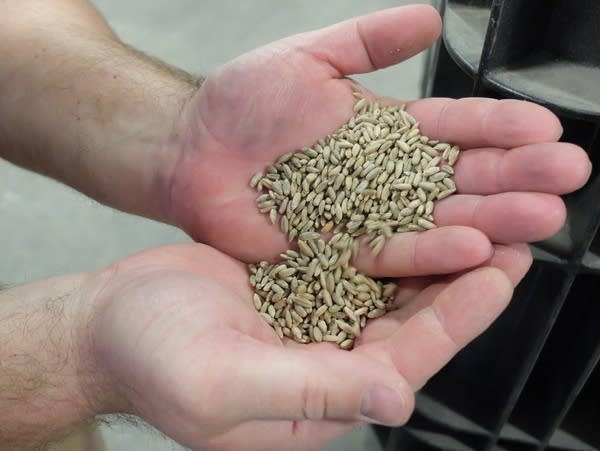Appetites: The rye grain comeback

A craft distillery owner shows a sample of rye used to make whiskey.
Dan Gunderson | MPR News
Go Deeper.
Create an account or log in to save stories.
Like this?
Thanks for liking this story! We have added it to a list of your favorite stories.


